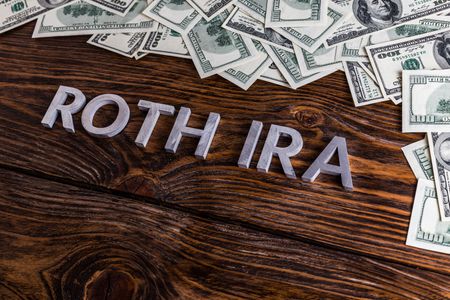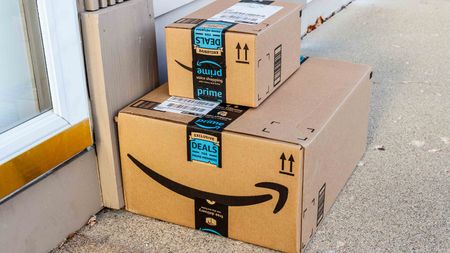Turn Gold Into Green
Unwanted watches or broken jewelry can be worth their weight.
Editor's note: This story has been updated since it originally was published in June 2008.
Many people are taking advantage of high gold prices to turn unwanted jewelry into cash, but others wonder whether cashing in their old gold is an idea whose time has not yet come. Couldn't gold prices go a lot higher? they are asking.
Gold hit a record high of $1,033 per ounce in March 2008 and was hovering just under $900 per ounce in April 2009. Some experts call the metal still relatively cheap. In inflation-adjusted terms, the previous high of $850 an ounce in 1980 translates to about $2,200 today. However, we anticipate no such price anytime soon (see What's Bubbling Over Now). Because gold has almost no industrial use, we expect it to trade in the $850-to-$1,000 range for the foreseeable future.

Sign up for Kiplinger’s Free E-Newsletters
Profit and prosper with the best of expert advice on investing, taxes, retirement, personal finance and more - straight to your e-mail.
Profit and prosper with the best of expert advice - straight to your e-mail.
| Row 0 - Cell 0 | Save Money on Everything |
| Row 1 - Cell 0 | Sell Your Stuff Online |
| Row 2 - Cell 0 | Get Money From Your Paycheck |
Everything from your grandfather's watch to those broken chains and lone earrings in the bottom of your drawer are worth their weight. And because prices move opposite to the value of the dollar, gold is considered a good hedge against inflation.
Still, with the price of gold unlikely to continue spiking, this could indeed be the time to cash in your unwanted pieces. If you simply don't want the jewelry, you can sell it and use the proceeds to buy a gold exchange-traded fund, such as streetTracks Gold Shares (symbol GLD).
When cashing in unwanted jewelry, find out how much it's worth, then shop around for the best offer. (And gold is not the only metal that'll fetch a decent price. Silver and platinum have also gone up.)
Ka-ching! The price you see in the newspaper for gold is based on pure, 24-karat gold. But most gold jewelry in the U.S. is less pure, at 10 to 18 karats. That means if you sell an 18-karat-gold necklace, you'll get 75% of the pure-gold price per ounce. A 14-karat piece drops to 58%, and so on. Plus, a cut goes for the buyer's profit and refiner costs.
If you're selling heirloom pieces, check with an appraiser, advises Chris Del Gatto, CEO of Circa, a jewelry buyer in New York City. "That little pin of your grandmother's could be worth much more than the intrinsic value of the gold." An appraiser usually charges between $50 and $200 an hour.
When looking for a buyer, get a few quotes for your loot. You can visit a pawnshop or jewelry store, or try the crop of buyers online. Circajewels.com, for example, specializes in reselling jewelry, while USGoldbuyers.com, Goldkit.com and Cash4Gold.com focus on scrap. You mail the buyer your jewelry for an estimate; it mails you a check if you accept the offer or sends your items back if you decline.
Whether you go local or online, check with the Better Business Bureau and your area's department of consumer affairs. Stick with a gold buyer that's been in business for a while and has few, if any, unresolved complaints with the BBB. If you go the Web route, make sure the buyer offers free insured shipping and that you keep a detailed record of the box's contents.
Find More Advice at Spending Wisely
Get Kiplinger Today newsletter — free
Profit and prosper with the best of Kiplinger's advice on investing, taxes, retirement, personal finance and much more. Delivered daily. Enter your email in the box and click Sign Me Up.

-
 The 'Concerning Trends' in Retirement Now
The 'Concerning Trends' in Retirement NowAmericans are less satisfied with their life in retirement and cite inflation and higher healthcare costs as just two of the problems they're facing.
By Janet Bodnar Published
-
 What Trump Has Done With Social Security So Far
What Trump Has Done With Social Security So FarSince President Trump was sworn into office on January 20, he has proposed or initiated changes impacting how Social Security functions, including closing offices and offering buyouts. Here's a roundup.
By Kathryn Pomroy Published
-
 Roth IRA Contribution Limits for 2025
Roth IRA Contribution Limits for 2025Roth IRAs Roth IRA contribution limits have gone up. Here's what you need to know.
By Jackie Stewart Last updated
-
 Four Tips for Renting Out Your Home on Airbnb
Four Tips for Renting Out Your Home on Airbnbreal estate Here's what you should know before listing your home on Airbnb.
By Miriam Cross Published
-
 Five Ways to a Cheap Last-Minute Vacation
Five Ways to a Cheap Last-Minute VacationTravel It is possible to pull off a cheap last-minute vacation. Here are some tips to make it happen.
By Vaishali Varu Last updated
-
 How to Figure Out How Much Life Insurance You Need
How to Figure Out How Much Life Insurance You Needinsurance Instead of relying on rules of thumb, you’re better off taking a systematic approach to figuring your life insurance needs.
By Kimberly Lankford Last updated
-
 Amazon Big Deal Days Is Coming! We’ve Got All the Details
Amazon Big Deal Days Is Coming! We’ve Got All the DetailsAmazon Prime To kick off the holiday season with a bang, Amazon Big Deal Days runs Tuesday, October 8 and Wednesday, October 9.
By Bob Niedt Last updated
-
 How to Shop for Life Insurance in 3 Easy Steps
How to Shop for Life Insurance in 3 Easy Stepsinsurance Shopping for life insurance? You may be able to estimate how much you need online, but that's just the start of your search.
By Kaitlin Pitsker Last updated
-
 Five Ways to Shop for a Low Mortgage Rate
Five Ways to Shop for a Low Mortgage RateBecoming a Homeowner Mortgage rates are high this year, but you can still find an affordable loan with these tips.
By Daniel Bortz Last updated
-
 Retirees, It's Not Too Late to Buy Life Insurance
Retirees, It's Not Too Late to Buy Life Insurancelife insurance Improvements in underwriting have made it easier to qualify for life insurance, which can be a useful estate-planning tool.
By David Rodeck Published
